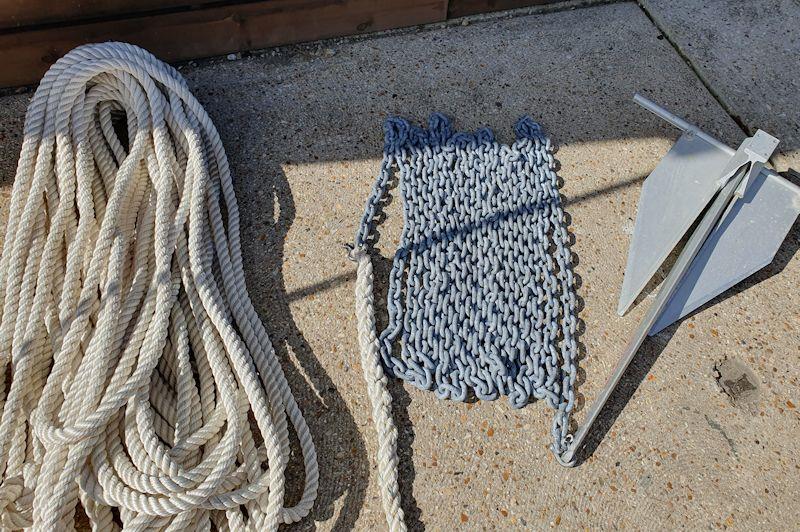
Get Ready to Kedge - Anchoring for Race Yachts
by Calanach Finlayson 12 Apr 2023 09:00 PDT

Get Ready to Kedge - Anchoring For Race Yachts © upffront.com
The practice of kedging has been used for hundreds of years as a method of manoeuvring or orienting a sailing vessel against tide and wind. A kedge anchor is typically smaller and lighter than the primary anchor, making it easier to handle.
Modern cruising yachts continue to use kedge anchors for a variety of purposes including to provide additional holding power in strong wind or to maintain the alignment of the vessel in a narrow anchorage where there is not room to swing.
In this article we look at how racing boats use kedge anchors to hold fast in light wind and adverse current.
Kedging or anchoring?
The definition of kedging is "to warp or pull (a ship) along by hauling on the cable of an anchor carried out from the ship and dropped". This refers to the process by which a lightweight kedge anchor might be carried away from the vessel in a dingy or tender and dropped, allowing the ship to be hauled in that direction by pulling against the kedge.
Under the Racing Rules of Sailing, such an activity would of course breach rule 42. So in fact when we refer to kedging in the context of racing, the correct terminology is really anchoring, as permitted by RRS 45. Technicalities aside, most racing boats will carry a small, lightweight 'kedge' anchor for this purpose.
Know when to do it
Anchoring during a coastal passage race is not uncommon and doing so at the right time can pay significant dividends. Any light airs situation in regions of strong tidal current is likely to present the opportunity for a spot of anchoring. If you find yourself in an adverse current with dying breeze, you might want to think about having a lightweight kedge anchor ready to go and positioning the boat in shallow enough water to use it.
A team which is able to deploy and retrieve their anchor efficiently can hold ground while other boats drift back down the race course around them, before getting sailing again as soon as the breeze fills in.
Take the right kit
The anchor
The number of anchors you carry on board will be governed by which category of Offshore Special Regs you must comply with. Beyond that, the size and style of anchor just has to meet the anchor manufacturer's recommendation based on the boat's dimensions with suitable combination of chain and rope.
Lewmar LFX anchors provide good holding power for their weight. Taking a 35ft yacht as an example, the manufacturer recommendation is the LFX 10lbs (4.5kg) anchor. In addition, these anchors can be partly disassembled for easier stowage.
Rode
Anchor rode is the combination of chain and rope. The length needed (scope) can be estimated as a multiple of water depth. The scope recommended by Lewmar is 3x water depth as a minimum, up to 10x as optimum. Unless you are anchoring for a good night's sleep or to wait out a storm, the shorter end of the scale is usually enough for kedging in foul tide. As a starting point, we suggest taking around 6m of chain plus at least 60m of rope which should be good for short term anchoring in up to 20m depth.
Anchor lines are usually made from Nylon or Polyester in a twisted or plaited style. It might be tempting to try and reduce weight/bulk by taking a thin Dyneema line or even webbing strap but remember you will need to haul this by hand, so cheese wire is best avoided. Webbing straps are particularly unsuitable due the tendency for vibration when held taught in a flow of water.
Stowage
A small, light kedge anchor is easy to transport, allowing you to stow it low down in the boat and not necessarily in the anchor locker. Flake the rode into an open bag or sack and place the anchor on top ready for deployment. A top tip is to leave the other end of the line sticking out of the bag or tied off to a handle so you can make this fast on deck before deploying.
In summary:
- Choose a lightweight kedging anchor which is suitably sized for your boat
- Add at least 5m of chain plus 60-100m of rope
- Stow the rope and anchor in a durable bag so it's ready to deploy
- Stow the kedging kit low down in the boat close to the keel, ensuring you have easy access
